An arrangement of the flatpicking standard, The Cuckoo''s Nest
| Chops: Intermediate Theory: Beginner Lesson Overview: • Learn the basics of flatpicking fiddle tunes. • Use basic arpeggios to embellish traditional melodies. • Increase your picking-hand technique by using strict alternate picking. |
Let’s dig into the tune. Fig. 1 is a basic version of the embellished melody, or break as it is often referred to in the flatpicking world. The form is a standard 32-measure AABB structure where the A and B parts are 8 measures in length. In the video below, you can see me playing through the entire arrangement.
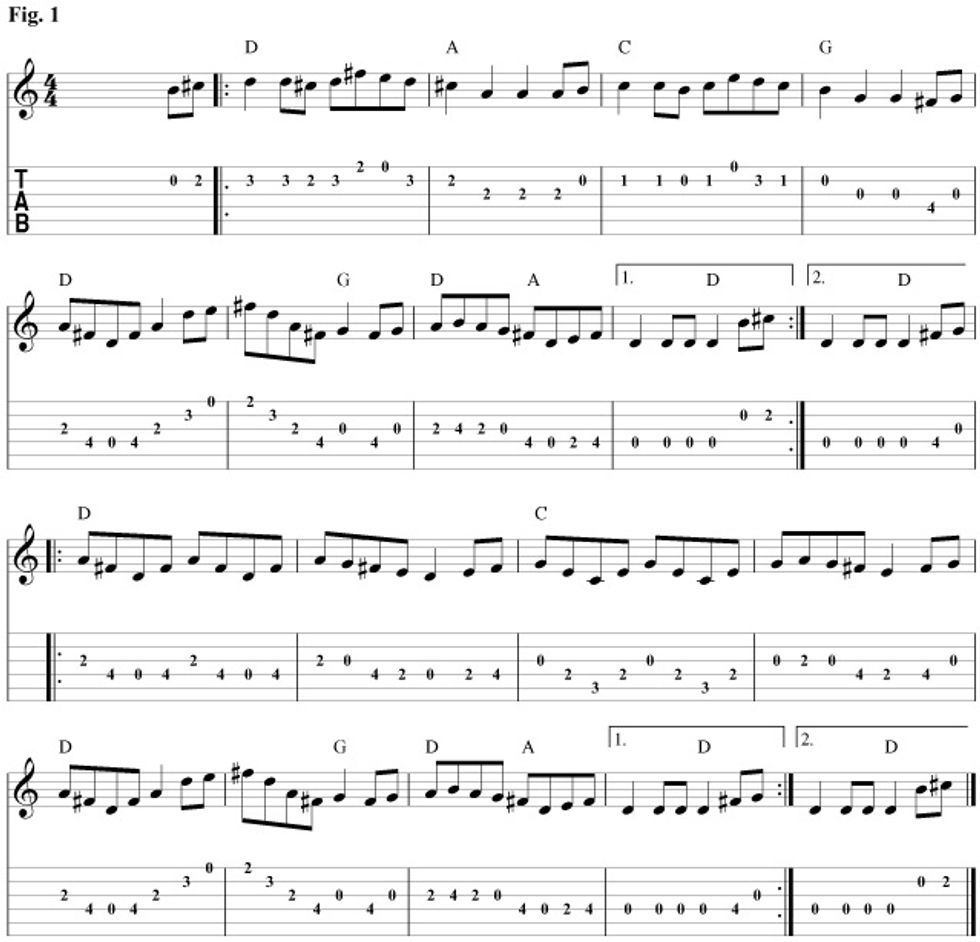
Even though our focus here is on lead playing and developing a variation of our theme, I recommend that you learn the chord structure first, before diving into the melody. Rhythm playing should not be overlooked as you’ll spend the better part of any jam session playing rhythm and a guitarist with solid rhythm chops is always welcome. You will also gain deeper insight into the relationship between the chords and melody. Many of the best lead guitarists are fantastic rhythm guitarists.
Next, we’ll focus on the pick hand. I am strong proponent of using strict alternate picking when it comes to flatpicking. The great benefit of this approach is that once you’ve trained your picking hand to consistently alternate pick direction you no longer have to think about the pick direction. The muscle memory is developed and you can trust your picking hand. If you’re new to strict alternate picking, start with the exercise in Fig. 2. Here we find four quarter notes, each on the counted part of the beat (1–2–3–4) therefore, each note is played with a downstroke of the pick. In Fig. 3, the beat is subdivided into eighth notes. Notes falling on the “and” of the beat receive an upstroke.
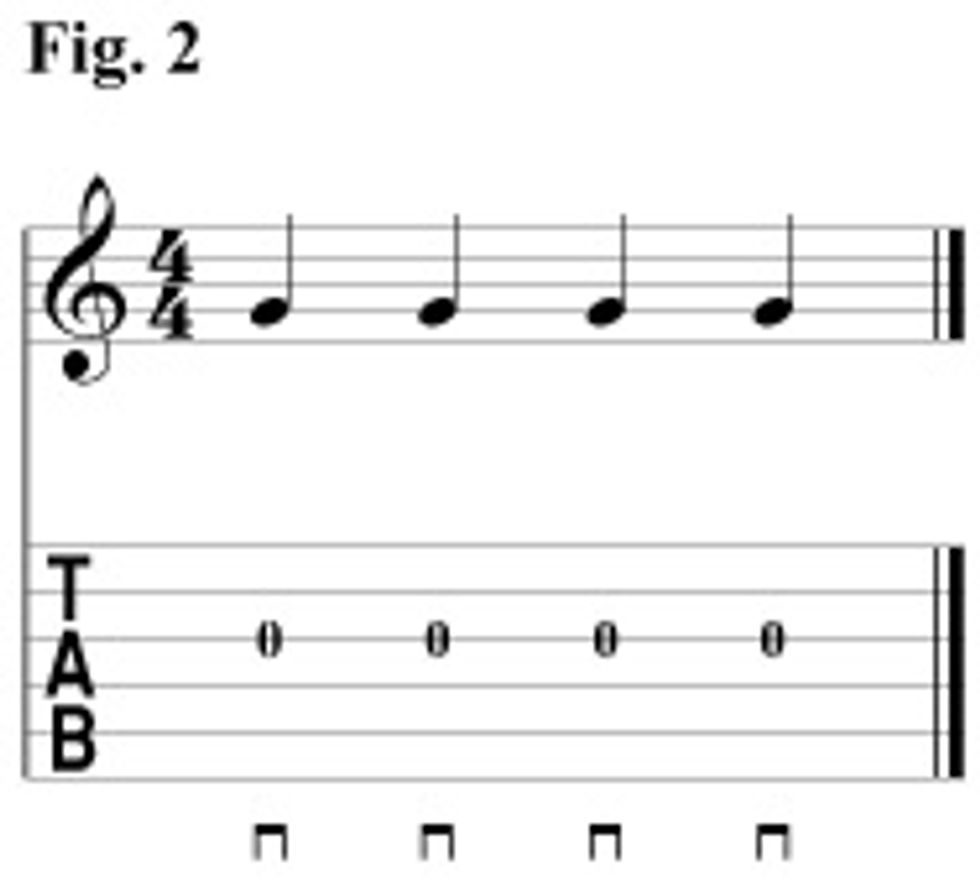
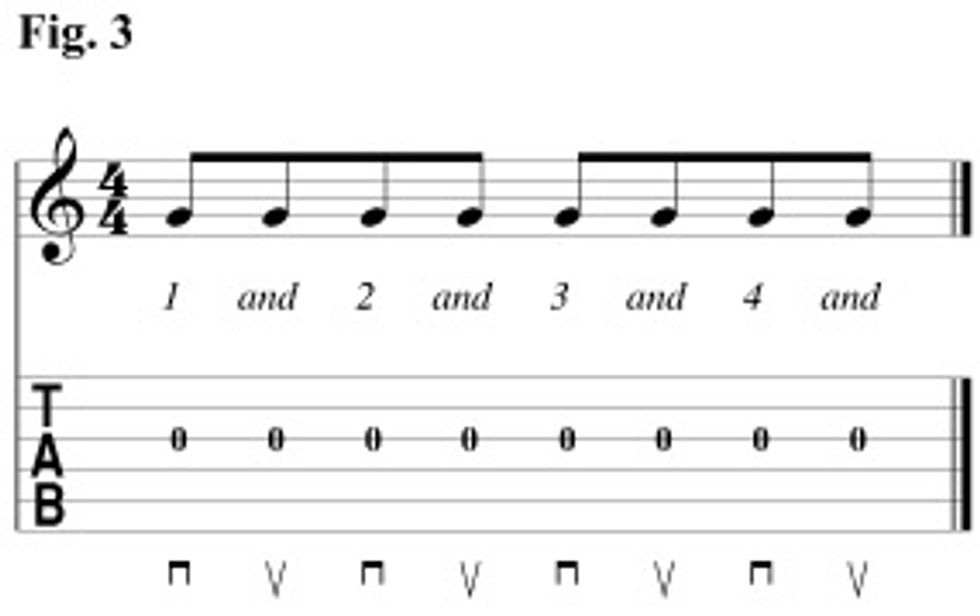
With strict alternate picking, the string placement of a note does not determine pick direction. Pick direction is solely determined by a note’s rhythmic placement in the measure. Follow these picking guidelines when learning “The Cuckoo’s Nest.” To close our discussion of the first break, I want to highlight the relationship between the melody and chords. Much of the melodic material is created from chord tones. Keep this in mind as we look at the second break, shown in Fig. 4.
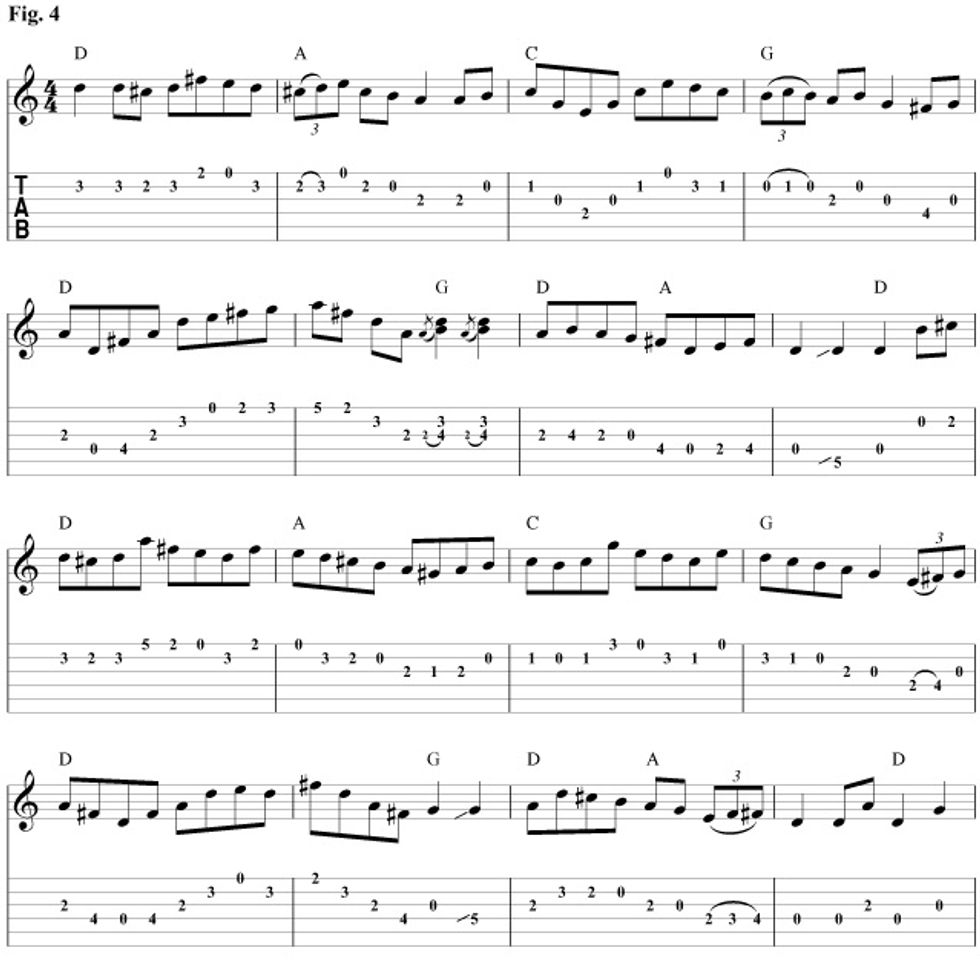
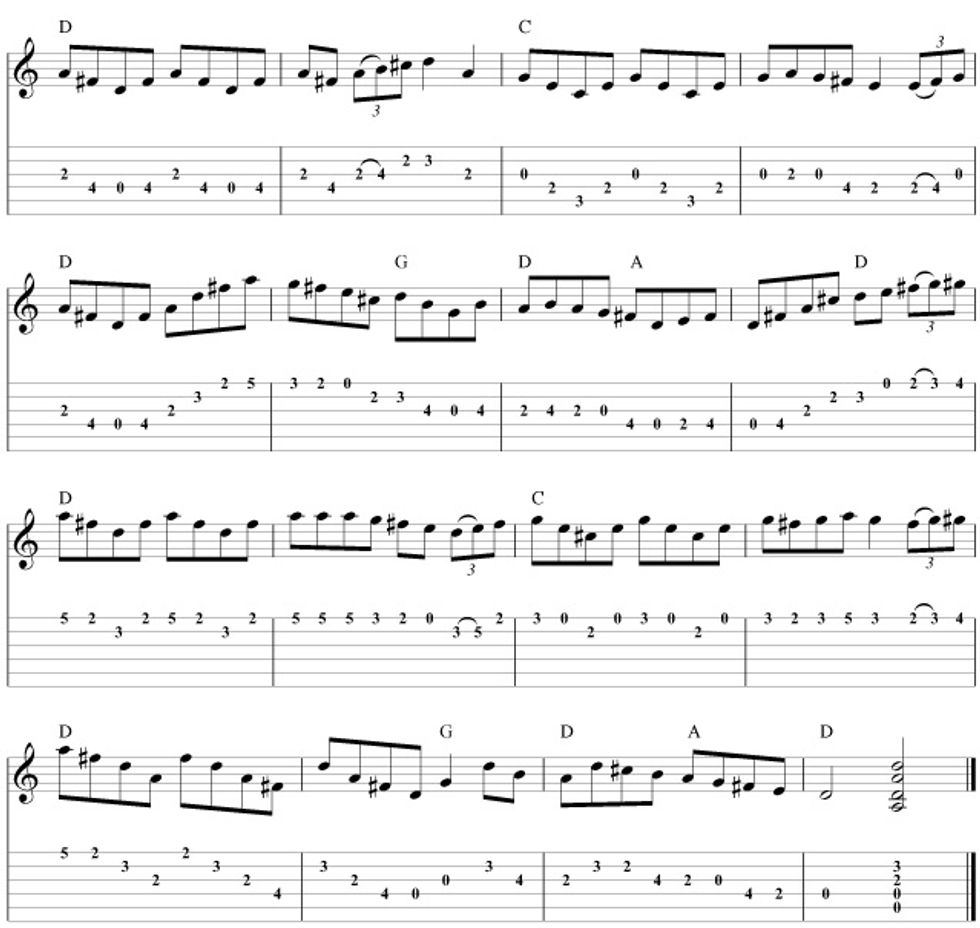
Chord tones are the melodic building blocks to many of the variations in this break. When chord tones are arranged sequentially from low to high or high to low, we form an arpeggio. Fig. 5 is a two-measure passage found in the first break. Fig. 6 and Fig. 7 are variations that utilize arpeggios.
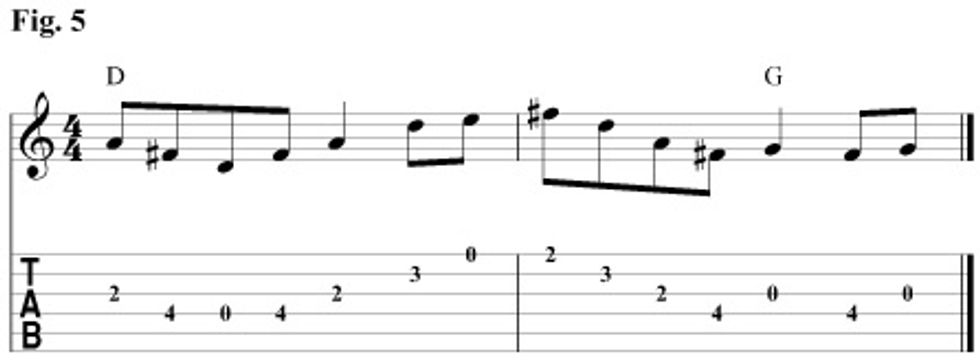
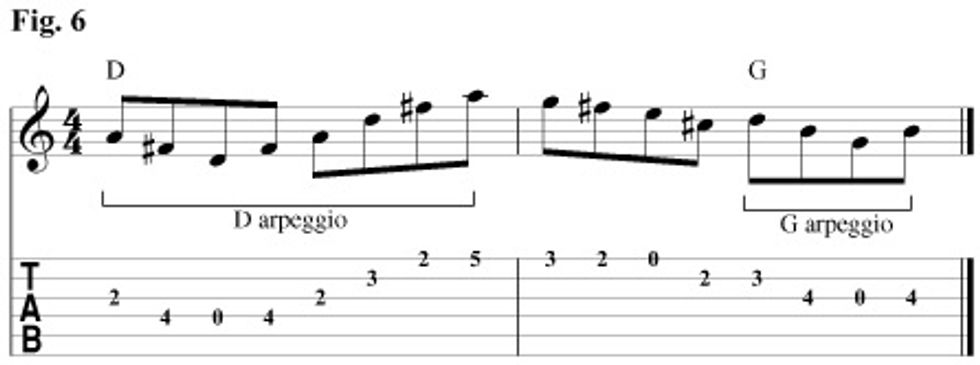
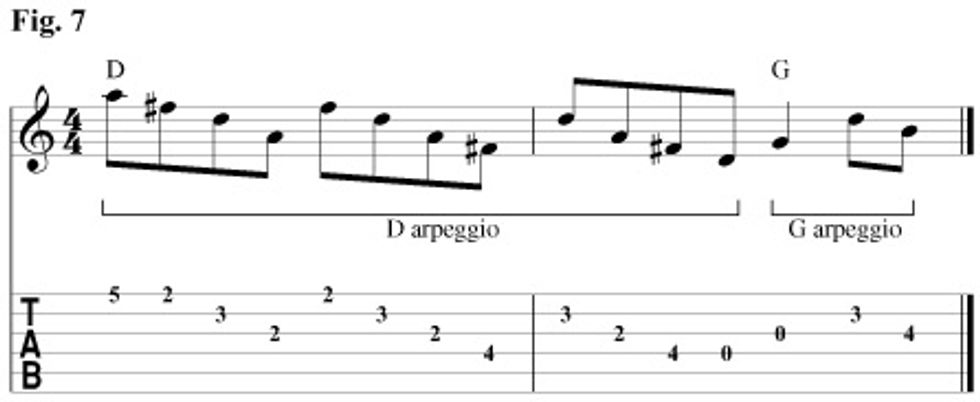
Eighth-note triplets are prominent in the second break. Splitting the beat into three equal parts creates an eighth-note triplet. Below are two common picking options used when playing triplets. The picking pattern in Fig. 8 sets the hand up for a downstroke on the first note of each beat–keeping with our pick direction guidelines. However, due to the double downstroke, it works best at slow to medium tempos and not as well at fast tempos. In Fig. 9, the pick is locked into a strict alternating pattern but the first note of the beat is not always played with a downstroke.
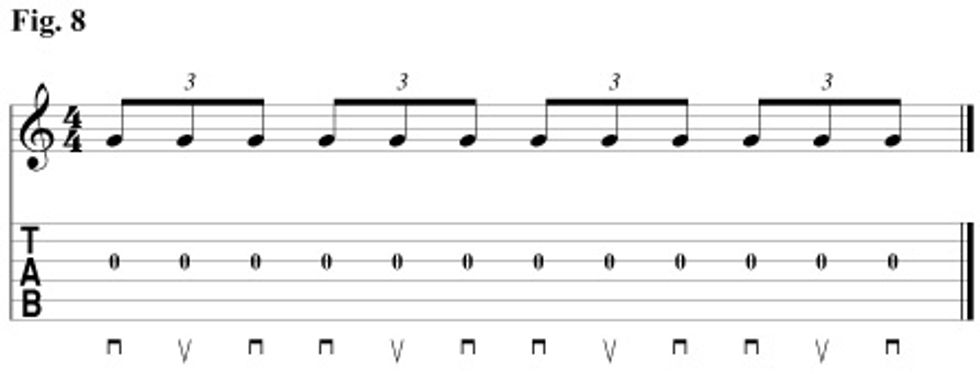
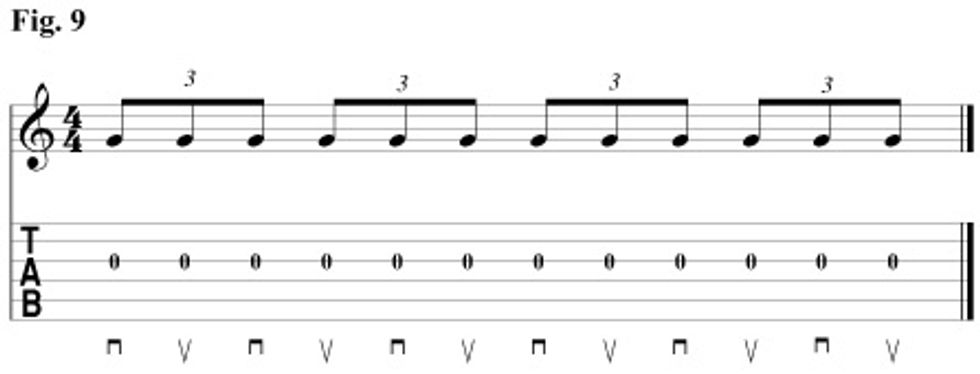
To overcome the drawbacks of both the previous options, I’ve used a slur in every triplet found in the second break. Slurs create a smooth and connected feel between notes, similar to the sound of a fiddler playing several notes with one draw of the bow. Guitarists achieve this sound by utilizing hammer-ons, pull-offs, or a combination of both. In Fig. 10 we see the result of a picked triplet compared to a triplet containing a slur.
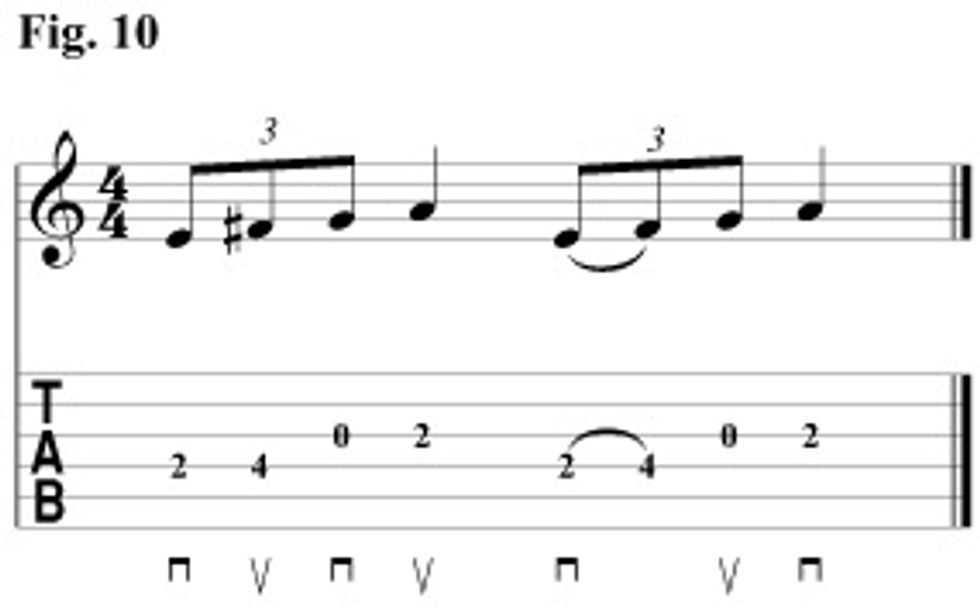
By playing the triplet with a slur, in this case a hammer-on, the triplet passage now has the same pick direction as that of a passage containing two eighth notes, and retains the constant down up motion in the pick-hand. Fig. 11 is an example of a triplet played with a hammer-on, pull-off combination.
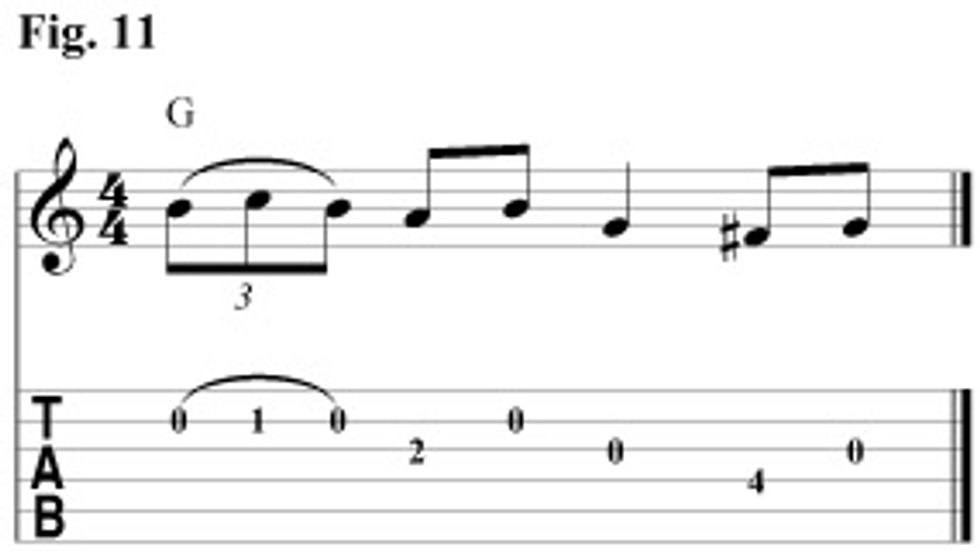
The goal is to have your hammer-ons and pull-offs sound as strong as your picked notes. Also, practice these passages with a metronome, as there can be a tendency towards rhythmic inaccuracy when slurring notes.
While learning “The Cuckoo’s Nest,” have fun applying all we’ve discussed. Don’t stop there though. Make sure to apply the concepts and techniques to other fiddle tunes as well as your favorite music. My foray into the world of flatpicking fiddle tunes began as a way to further develop my pick-hand technique but I got hooked on the music. Watch out, the fiddle tune bug just might bite you.
 Mike Cramer is an award-winning performer and educator. A stylistically versatile multi-instrumentalist, Cramer has shared the stage with or opened for B.B. King, Tommy Castro, Chris Duarte, Gordon Goodwin, John Hartford, and Steve Kaufman. Cramer co-founded All 12 Notes, LLC where he has a private lesson studio, teaching guitar, mandolin, and electric bass. His most recent CD release, Open Spaces, is a collection of original and traditional acoustic pieces. For more information, visit all12notes.com.
Mike Cramer is an award-winning performer and educator. A stylistically versatile multi-instrumentalist, Cramer has shared the stage with or opened for B.B. King, Tommy Castro, Chris Duarte, Gordon Goodwin, John Hartford, and Steve Kaufman. Cramer co-founded All 12 Notes, LLC where he has a private lesson studio, teaching guitar, mandolin, and electric bass. His most recent CD release, Open Spaces, is a collection of original and traditional acoustic pieces. For more information, visit all12notes.com.